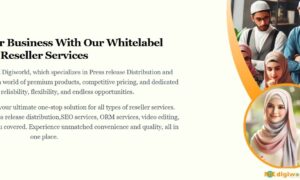An expert article by Sapnil Bhatnagar
Sapnil Bhatnagar is a Digital Product Manager with extensive experience in building compelling user experiences in digital products and excelling in product performance optimization. He is also an expert in leading high-performance development teams through Agile methodologies, where he spearheads product strategy and roadmapping.
As the co-founder of ConnectingTraveller.com, a travel-tech platform that connects travelers with local experts for authentic, personalized travel experiences, he has showcased his ability to drive impactful solutions and foster innovation in dynamic environments.
Introduction
Successful products are not only about feature development, but, understanding the user needs, your desired business outcome and then developing a feature which is in alignment to your user needs and strictly ties with your product strategy; Product development is not only about achieving that multi-million dollar sale but also about the mindset and means followed to achieve those targets, and having a cohesive set of product focus area tied to your business outcome is crucial for product feature development, As it enables faster validation signals through which product success should be measured.
Let’s explore the abstraction layers of the types of outcomes
- Business Outcomes
- Product Outcomes
Business Outcomes
A Business Outcome is a concise, defined, and observable result or change in business performance, supported by a specific measure. The Overall business outcome is usually wider and more strategic which is achieved through swift tactical and planned moves.
Outcome organizations that lets autonomy and broader scope for a Product Team percolate down the value chain embrace strategic shifts and promote outcomes-oriented decision making eventually, building laser sharp product areas.
The team will be able to discover in a broader scope and work around the product opportunities linked to the business opportunities to ensure that the decisions are the most relevant for the business and the customers.
For example, “Increasing Customer Booking on your platform by 25% to enable revenue growth’ is a business outcome. It is the end of the situation you want to achieve.
Product Outcomes
As a Product Team, you can impact a Business Outcome through a Product Outcome.
The Product outcome is a result we want to achieve that drives the evolution of the product to change the customer behaviour to improve the product experience. These changes help to reach the business outcome.
Product outcomes usually come from business outcomes. Product Teams manage them. The Product Team has a direct influence on it.
An Outcome is focused on business Impact, letting the Product team deep dive into a tactical point of view. Giving them the ability to draw the overall landscape of opportunities related to a product outcome and, of course, allowing them to better understand the “why” to reach the “how” correctly.
This way of doing things prevents the Product team from being narrow on too little scope and risking missing a more significant opportunity
Characteristics for developing a Product Focus Area driven through Business and Product outcomes:
- Enough ‘Low Level’ to let the Product team deep dive and define in the finer detail what is the feature set which requires a build.
- Should have the end goal of the situation product teams want to reach.
- Should enable instrumental product discovery.
- Is related to the company’s mission and overall strategic product vision.
- Can be measured and is driven by a time-bound sense of urgency.
Framework to crafting a Product Focus Area Tied to your Business Outcome:
Before we move into constructive optimism, Let’s look at the flow of where a Product Feature set sits within the organization; Interestingly, It’s at the Bottom!
Though without crafting a compelling feature set and muting feature noise in your product backlog, you might end up leading the development towards a negative exponential on achieving your Business Objective, hence, fixing the lowest levels will move your chances of achieving your Business Strategy from being Probabilistic to more Deterministic!
Step 1
Develop awareness of the business strategy within your team by using TLDR
To effectively build products that align with business goals, teams need to understand the overarching strategy, in clear, accessible terms. A “TLDR” (Too Long; Didn’t Read) summary can be a powerful tool here, condensing complex strategy into concise simple terms which can be understood by all levels in the organization is critical. Start by distilling the business strategy down to its essence:
As the following questions – What are the critical business objectives? Who is the target customer? What core value does the product aim to provide?
This high-level overview allows every team member to grasp not just what the strategy is, but why it matters.
Business Insight: A 2021 Harvard study on corporate strategy concludes that when team members understand the broader purpose behind their work, they develop better sense of ownership and citizenship behaviour, eventually increasing organizational productivity by 1.7x.
Here is a minimalistic example on how to synthesize your 10-page long Business and Product Strategy Documents into key themes using an example TLDR which can drive clarity in your organization:
Step 2
Drive strategic brainstorming for product ideas that align with the business strategy using structured prompt cards
Once the team is aligned on the strategy, channel their understanding into a brainstorming session. Use prompt cards to steer creativity toward generating product ideas that support strategic objectives. Each card can focus on critical aspects of the strategy, such as customer needs, unique value propositions, or emerging market trends.
Once the ideas are available, use a 2*2 Impact/Effort Matrix as below to perform a Cost-Benefit analysis and start working on ideas which are high impact/low effort first.
This structured yet flexible approach encourages out-of-the-box thinking while keeping the team focused on ideas that add strategic value.
Step 3
Start with prioritization and build Vertical/Horizontal feature set
A product will always have features that are statistically dependent and independent. Vertical features individually integrate into the Horizontal feature to build a fully scalable solution.
Let’s declutter vertical and horizontal feature along with an example –
Vertical Features represent independent components that can function autonomously without relying on other parts of the system. These foundational elements form the core building blocks of your product, Consider Vertical Features as your vehicle component to building your overall product structure
Horizontal Features are integrative layers that depend on the successful implementation of Vertical Features. They create unified functionality by connecting and leveraging these independent components.
In practice, imagine a user experience workflow automation platform. The individual workflow states operate as Vertical Features – each must function effectively on its own. The complete workflow system acts as a Horizontal Feature, depending on these individual states to deliver a cohesive solution.

By understanding which features operate independently versus those that rely on other components, teams can strategically sequence their development efforts. This clarity ensures foundational elements are built first, creating a stable base for dependent features.
Step 4
Conclude discovery and start build phase through faster prototyping

Transition from Discovery to the Build Phase with Rapid Prototyping
As discovery concludes and feature breakdown is achieved, the level of ambiguity is drastically decreased, enabling your development teams to focus on what is most important and how to build it.
The top-ranked ideas are identified and stacked, enabling smooth Segway into Build Phase, to achieve faster time-to market consider rapid prototyping.
Prototyping allows the team to bring concepts to life quickly, enabling early validation and feedback from stakeholders or customers. By testing basic versions of the product, teams can validate the concept’s viability, functionality, and appeal before committing extensive resources to development.
Notable Prototyping tools available in the market are as below
Business Insight: Software prototyping can reduce development costs by up to 50% and time-to-market by 40%, Prototyping also boosts user adoption, with healthcare companies seeing 30% higher satisfaction rates for medical devices. In the software industry, companies like Figma, Balsamiq, and Webflow use prototyping to improve designer-developer collaboration, leading to 20% faster development sprints.
In Summary
In summary, developing product focus areas that are tightly coupled with strategic business outcomes is crucial for driving successful product development and generating asymmetric impact.
The key steps are
1) Establish TLDR clarity on the business strategy
2) Ideate product concepts that align using structured prompts
3) Prioritize and sequence vertical/horizontal feature sets
4) Transitioning into build with rapid prototyping
Adopting this framework into your product management methodology will enable movement from probabilistic to a more deterministic path which is essential for curating a top 1% product portfolio.



































